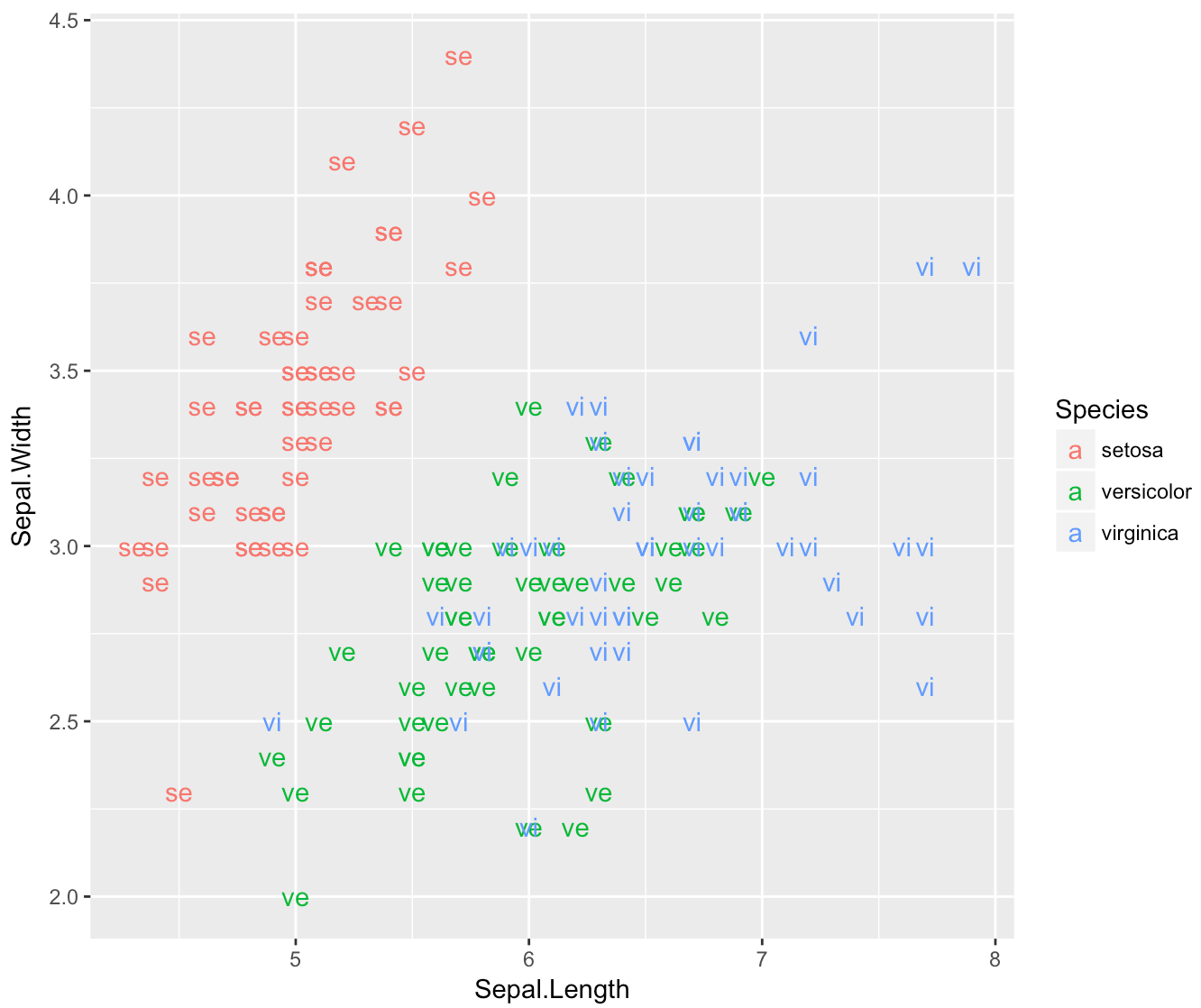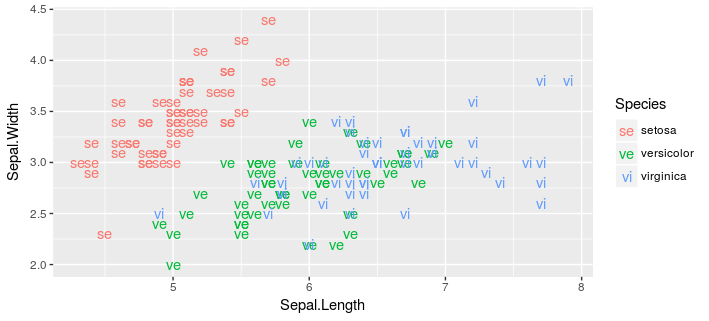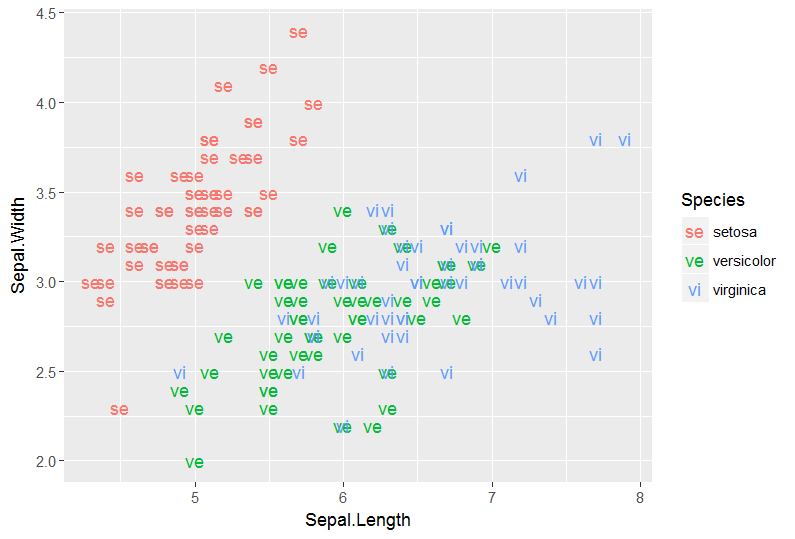You can change the legend key generating function. This still requires a bit of manual intervention, but arguably less than using the grobs.
library(ggplot2)
library(grid)
data(iris)
iris$abbrev = substr( iris$Species, 1, 2 )
oldK <- GeomText$draw_key # to save for later
# define new key
# if you manually add colours then add vector of colours
# instead of `scales::hue_pal()(length(var))`
GeomText$draw_key <- function (data, params, size,
var=unique(iris$abbrev),
cols=scales::hue_pal()(length(var))) {
# sort as ggplot sorts these alphanumerically / or levels of factor
txt <- if(is.factor(var)) levels(var) else sort(var)
txt <- txt[match(data$colour, cols)]
textGrob(txt, 0.5, 0.5,
just="center",
gp = gpar(col = alpha(data$colour, data$alpha),
fontfamily = data$family,
fontface = data$fontface,
fontsize = data$size * .pt))
}
ggplot(data=iris, aes(x=Sepal.Length, y=Sepal.Width,
shape=Species, colour=Species)) +
geom_text(aes(label = abbrev))
# reset key
GeomText$draw_key <- oldK
![enter image description here]()




[[15]][[1]][[1]]here? – Mephistopheles